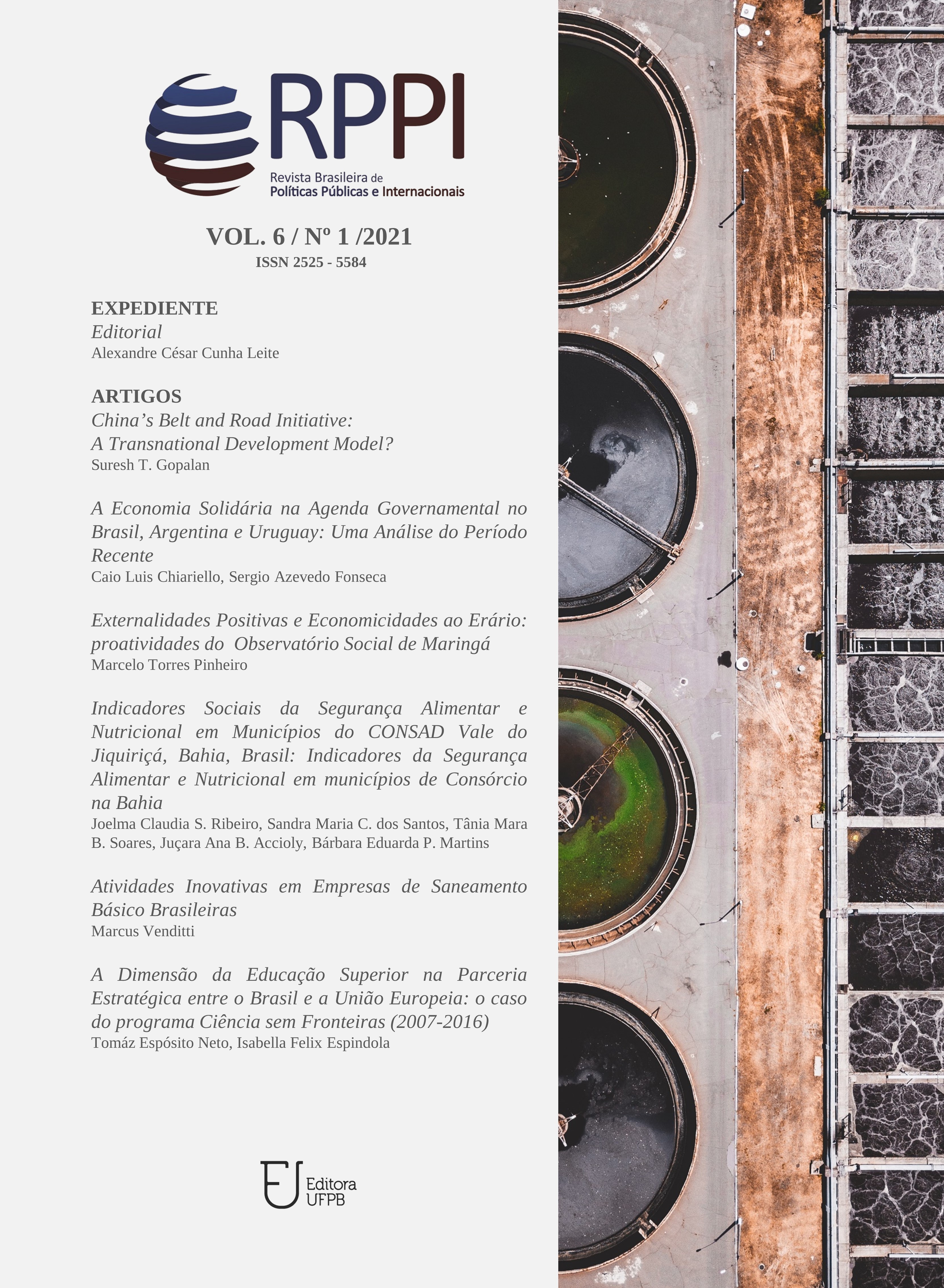China’s Belt and Road Initiative
A Transnational Development Model?
DOI:
https://doi.org/10.22478/ufpb.2525-5584.2021v6n1.46184Palabras clave:
Belt and Road, DevelopmentResumen
The Belt and Road initiative announced by China’s President Xi Jinping has introduced a novel economic model that seeks to shift the site and purpose of development outside China. The initiative proposes the construction of a series of transportation platforms along the ancient Silk Road that connected China with Central Asia, Europe and West Asia. This outward thrust of investment and capital construction envisages significant reduction of distance and in spatial barriers between and China and the world that will form the road traversing different geographies of nations, territories and cultures. I call China’s Belt and Road initiative a transnational development model as it aims to coordinate factors of economic circulation across different national spaces controlled by different governance models, legal norms and political contingencies. Centuries ago when the original trading route of the Chinese Silk Road was formed, this overland route was a contiguous territory where boundaries remained too fluid for any authorities to impose its will. But today the Silk Road is an imagined geography as this route is controlled by sovereign national territorial states having effective authority structures over each of these units. The initiative then requires China to entail a broad-based economic coordination with a diverse governance systems. My paper will explore how the transnational scope of the Belt and Road initiative come to negotiate diverse authority structures in particular national contexts.
Descargas
Citas
Chen, Xiangming, “The New Spatial Division of Labour and Commodity Chains in Greater South China Economic Region” in Gary Gereffi and Miguel Korzeniewicz (eds.) Commodity Chains and Global Capitalism (London: Praeger , 1994)pp165-186
Chakravorty, Sanjoy, The Price of Land: Acquisition, Conflict, Consequence (New Delhi: Oxford University Press, 2013)
Dias, Anthony, Displacement and Its Human Cost: Land Acquisition, Displacement and Rehabilitation of Tribals (Jaipur: Rawat Publication, 2012)
Hansen, Valerie, The Silk Road: A New History (New York: Oxford University Press, 2016)
Janelle, Donald G., ,Central place development in a time-space framework’, Professional Geographer, Vol.20, No.1, pp5-10
Lobo, Lancy and Shashikant Kumar, Land Acquisition. Displacement and Resettlement in Gujarat 1947-2004 (Thousand Oaks: Sage, 2009)
Descargas
Publicado
Número
Sección
Licencia
Derechos de autor 2021 T. Gopalan Suresh

Esta obra está bajo una licencia internacional Creative Commons Atribución 4.0.
Autores que publicam nesta revista concordam com os seguintes termos:- Autores mantém os direitos autorais e concedem à revista o direito de primeira publicação, com o trabalho simultaneamente licenciado sob a Licença Creative Commons Attribution que permite o compartilhamento do trabalho com reconhecimento da autoria e publicação inicial nesta revista.
- Autores têm autorização para assumir contratos adicionais separadamente, para distribuição não-exclusiva da versão do trabalho publicada nesta revista (ex.: publicar em repositório institucional ou como capítulo de livro), com reconhecimento de autoria e publicação inicial nesta revista.
- Autores têm permissão e são estimulados a publicar e distribuir seu trabalho online (ex.: em repositórios institucionais ou na sua página pessoal) a qualquer ponto antes ou durante o processo editorial, já que isso pode gerar alterações produtivas, bem como aumentar o impacto e a citação do trabalho publicado (Veja O Efeito do Acesso Livre).




_.jpg)






.png)


.jpg)
_.png)
